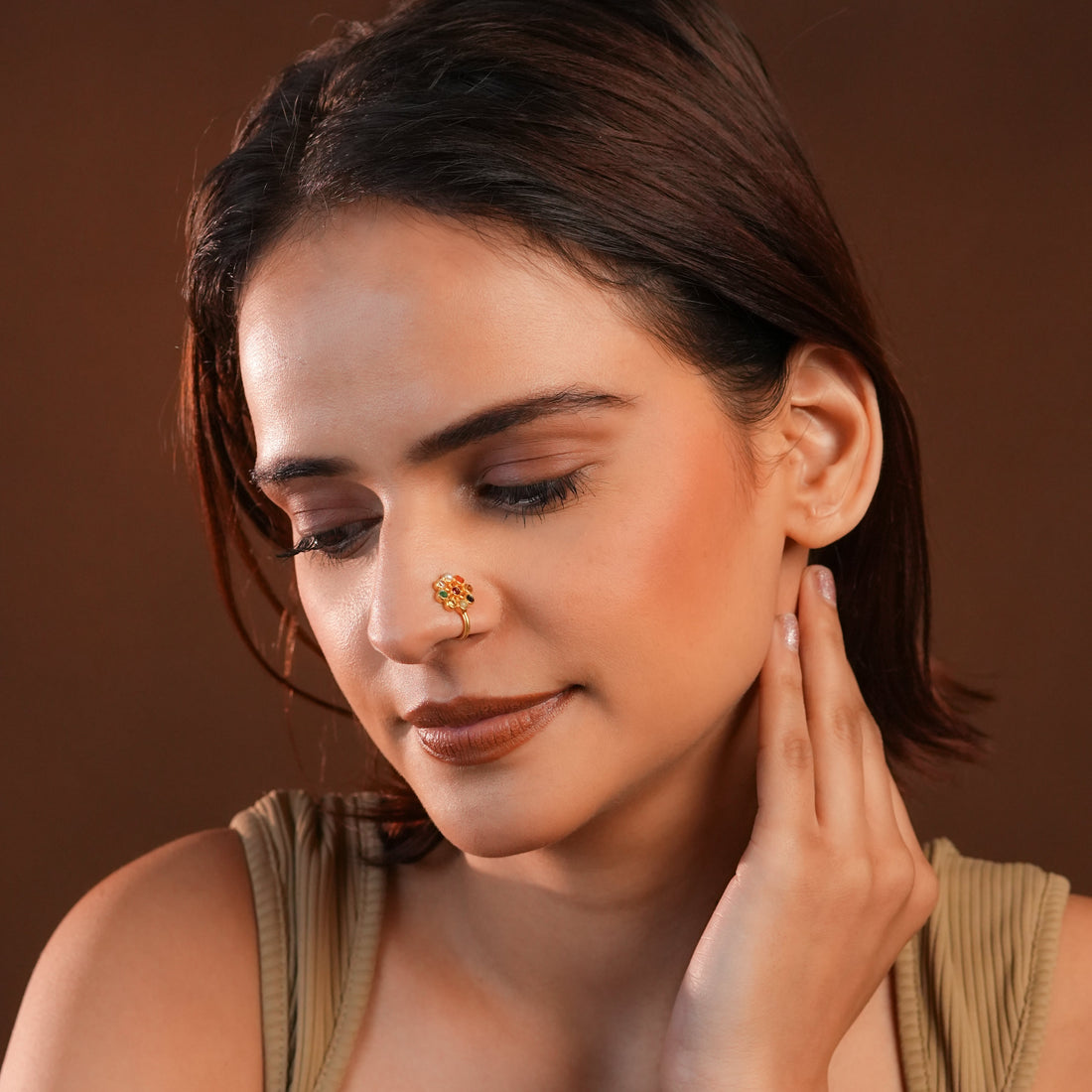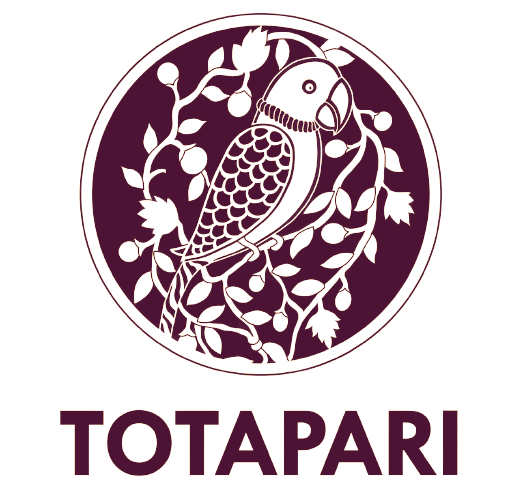Introduction
Nose pins have intrigued people more than any kind of face adornments in jewellery. We want to clear all misconceptions for you as a beginner to the world of nose pins.
In India, the nose pin is more than just jewellery. It's a timeless tradition, a fashion statement, and a personal signature all rolled into one. From the bustling streets of Delhi to the serene coastlines of the south, its delicate sparkle has graced faces for generations.
So, are you thinking about getting one?


That's exciting!
But with that excitement comes a lot of questions, such as:
- What does it symbolize?
- Can I wear one if I'm not married?
- Can men wear them too?
- And what's the process of getting pierced actually like?
If these questions are on your mind, you've come to the right place. Consider this your complete beginner's guide for 2025. We'll walk you through everything you need to know, from the meaning and purpose of a nose pin to who can wear one with pride.
The Basics: Demystifying the Nose Pin and Piercing
Before we explore the deeper meanings, let's get our definitions straight. Though often used interchangeably, the "piercing" and the "pin" are two distinct things.
What is a Nose Piercing?
A nose piercing is the actual act of creating a small, clean hole in the skin and cartilage of your nose. This is done by a trained professional using a sterile needle. While the most common placement is the nostril (nostril piercing), another popular option is the septum (septum piercing), which goes through the wall of cartilage that divides your nostrils. For the purpose of this guide, we'll focus on the traditional nostril piercing, which is the canvas for the classic nose pin.


What is a Nose Pin?
The nose pin is the beautiful piece of jewellery that sits in your piercing. The term "nose pin" is often used as a catch-all in India, but it comes in various forms, each with a different way of staying in place. The most common types you'll find are:
- Nose Stud: A small, straight post with a decorative top. It's held in place by a tiny ball or a slightly thicker end on the inside.
- Nose Screw: This is the most popular style in India. It has a curved, screw-like tail on the inside of the nostril that keeps it extremely secure. They come in left-hand and right-hand screw designs to fit either nostril perfectly.
- L-Shaped Pin: As the name suggests, this pin is bent at a 90-degree angle on the inside, which rests against the inner wall of the nostril to hold it in place.
- Nose Ring/Hoop: A circular piece of jewellery that goes through the piercing and hoops around the nostril.

More Than Metal: The Purpose and Power of the Nose Pin
Why has this single piece of jewellery held such a powerful place in Indian culture for centuries? Its purpose is a rich tapestry woven from threads of tradition, science, and style.
 A Symbol of Tradition and Status
A Symbol of Tradition and Status
Historically, the nose pin has been a profound cultural symbol. In many Hindu traditions, a new bride receives a nose pin or nath during her wedding ceremony. This is seen as an homage to the Goddess Parvati, the deity of marriage, fertility, and strength.
It signifies her new marital status and is believed to bring prosperity to her new home. Beyond marriage, the material and craftsmanship of the nose pin—be it a simple gold stud or an elaborate, diamond-encrusted creation—served as a visible indicator of a family's wealth and social standing.
The Ayurvedic Connection
There is also a fascinating scientific reason rooted in ancient Indian medicine. Ayurveda connects the spot on the left nostril to the female reproductive organs via a specific nerve. It is believed that piercing this spot, known as the Ida Nadi or Left Channel, helps to regulate the energy flow, thereby easing menstrual cramps and reducing the pain of childbirth. This is why, even today, you will find that a majority of women in India have their piercing on the left side.
A Modern Mark of Style: Attraction and Empowerment
Fast forward to 2025, and the nose pin has cemented its place as a powerful fashion statement. For many in urban hubs, its modern purpose is aesthetics, focusing on two key principles:
1. Creating a Focal Point of Attraction: A nose pin is a strategic tool of beauty. A sparkling stud or an elegant hoop acts as a deliberate focal point, drawing attention directly to your face. It enhances the "triangle of beauty" between your eyes and lips, ensuring your entire face is appreciated.
2. The Art of Illusion and Empowerment: it’s a subtle artistic statement. By adding a beautiful focal point, it draws attention to the artwork itself, helping shift focus away from any facial features you might feel less confident about.
This gives you control over your own narrative, which is truly an empowering act.
It's this elegant combination of strategic beauty and self-expression that makes the nose pin a cherished accessory for showcasing individuality and confidence.
Myth-Busting: Who Can Wear a Nose Pin in Modern India?
Here is where we tackle the questions that hold most people back. The "rules" you might have heard are largely a thing of the past. Let's set the record straight.
The Big Question: "Can Unmarried Girls Wear Nose Pins?"
Yes, absolutely and unequivocally. This is the most common misconception we need to clear up. While a large, ornate nath is still reserved for bridal ceremonies, the everyday nose pin or stud has completely detached from its marital symbolism. In modern India, wearing a nose pin as an unmarried woman is as normal and acceptable as wearing a pair of earrings.
Breaking Barriers: "What About Men? Can Men Wear Nose Pins?"
Again, a resounding yes! The idea that nose piercings are exclusively for women is a rapidly fading stereotype. Men's fashion in India has become incredibly expressive, and nose piercings are at the forefront of this change. Inspired by style icons and musicians, men are confidently embracing nose studs and rings as a mark of individuality and a bold style choice.
Your Journey Begins Now
From its sacred origins to its current status as a must-have fashion accessory, the nose pin is a testament to India's beautiful ability to honour tradition while embracing change.
We've covered the basics, explored its purpose, and most importantly, cleared the air on who can wear one. The conclusion is simple: a nose pin is a personal choice. Whether you want to connect with your roots, follow Ayurvedic wisdom, or simply adorn your face with something beautiful, the path is clear for you.
Now that you know the fundamentals, are you ready to delve deeper into its fascinating past?
Stay tuned for our next post to know more about Nose Pins @ https//:Totapari.com



